
The cost of saving the Kimberley’s wildlife
Business 101: the first step to achieving a goal is to assess its feasibility and cost. That this is often neglected for conservation goals is

Business 101: the first step to achieving a goal is to assess its feasibility and cost. That this is often neglected for conservation goals is

Business 101: the first step to achieving a goal is to assess its feasibility and cost. That this is often neglected for conservation goals is

Let there be no doubt. The plan to allow 15,000 amateur hunters into NSW national parks is not motivated by good environmental policy. At a
The Invasive Species Council today released detailed information showing that the Game Council model’s for recreational hunting, due to be expanded into NSW national parks,
The Invasive Species Council today released detailed information showing that the Game Council model’s for recreational hunting, due to be expanded into NSW national parks,
The Invasive Species Council today condemned a decision by the NSW Government to open up about 40% of the state’s national parks and reserves to

How did the ‘independent survey’ of feral horse numbers conducted by brumby advocates measure up as a survey method? Should it replace the Distance Sampling method currently used by the NSW government?
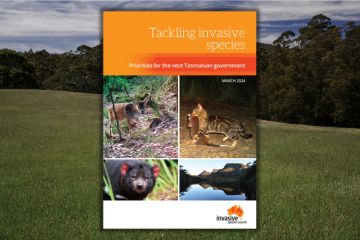
Tasmania is a remarkable island state with native animals and plants found nowhere else on earth, some of the most spectacular protected areas in Australia, and highly valued agriculture, forestry, and tourism sectors.

Invasive species are a major driver of extinction around the world. Controlling these species has proven difficult and expensive. A strategy that has been continually proposed is to commercialise the control of overabundant invasives, i.e. eat our way out of the invasive species problem. Unfortunately, this has many issues.
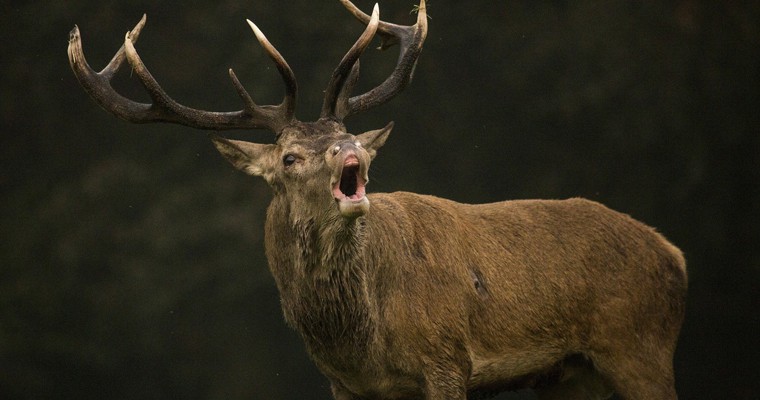
Feral deer are probably Australia’s worst emerging pest problem, causing damage to the natural environment and agricultural businesses.
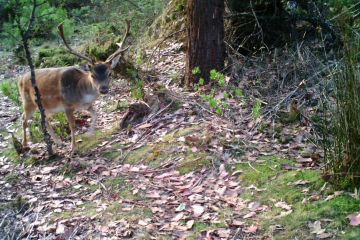
The Invasive Species Council has 8 recommendations to be implemented in 2024 to mitigate the negative impacts of feral deer on the environment, economy, and public safety.
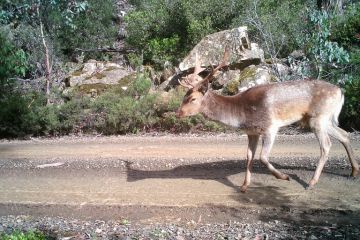
8 recommendations for the Plan to be successful in mitigating the negative impacts of feral deer on the environment, economy, and public safety,
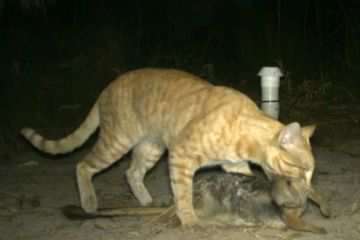
The updated Threat Abatement Plan for predation by feral cats presents a significant opportunity to curb the impacts of feral and roaming pet cats on wildlife, but only if it is adequately funded and fully implemented.

The Invasive Species Council estimates that at least $2.19 million per annum is needed for the next four years to effectively manage deer populations, a cost that represents only 2% of the annual economic impact of feral deer.
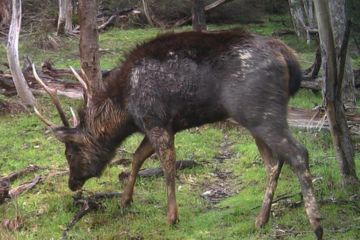
This submission presents 101 recommendations to improve invasive species management in the state.

Business 101: the first step to achieving a goal is to assess its feasibility and cost. That this is often neglected for conservation goals is

Business 101: the first step to achieving a goal is to assess its feasibility and cost. That this is often neglected for conservation goals is

Let there be no doubt. The plan to allow 15,000 amateur hunters into NSW national parks is not motivated by good environmental policy. At a
The Invasive Species Council today released detailed information showing that the Game Council model’s for recreational hunting, due to be expanded into NSW national parks,
The Invasive Species Council today released detailed information showing that the Game Council model’s for recreational hunting, due to be expanded into NSW national parks,
The Invasive Species Council today condemned a decision by the NSW Government to open up about 40% of the state’s national parks and reserves to

How did the ‘independent survey’ of feral horse numbers conducted by brumby advocates measure up as a survey method? Should it replace the Distance Sampling method currently used by the NSW government?

Tasmania is a remarkable island state with native animals and plants found nowhere else on earth, some of the most spectacular protected areas in Australia, and highly valued agriculture, forestry, and tourism sectors.

Invasive species are a major driver of extinction around the world. Controlling these species has proven difficult and expensive. A strategy that has been continually proposed is to commercialise the control of overabundant invasives, i.e. eat our way out of the invasive species problem. Unfortunately, this has many issues.

Feral deer are probably Australia’s worst emerging pest problem, causing damage to the natural environment and agricultural businesses.

The Invasive Species Council has 8 recommendations to be implemented in 2024 to mitigate the negative impacts of feral deer on the environment, economy, and public safety.

8 recommendations for the Plan to be successful in mitigating the negative impacts of feral deer on the environment, economy, and public safety,

The updated Threat Abatement Plan for predation by feral cats presents a significant opportunity to curb the impacts of feral and roaming pet cats on wildlife, but only if it is adequately funded and fully implemented.

The Invasive Species Council estimates that at least $2.19 million per annum is needed for the next four years to effectively manage deer populations, a cost that represents only 2% of the annual economic impact of feral deer.

This submission presents 101 recommendations to improve invasive species management in the state.

Business 101: the first step to achieving a goal is to assess its feasibility and cost. That this is often neglected for conservation goals is

Business 101: the first step to achieving a goal is to assess its feasibility and cost. That this is often neglected for conservation goals is

Let there be no doubt. The plan to allow 15,000 amateur hunters into NSW national parks is not motivated by good environmental policy. At a
The Invasive Species Council today released detailed information showing that the Game Council model’s for recreational hunting, due to be expanded into NSW national parks,
The Invasive Species Council today released detailed information showing that the Game Council model’s for recreational hunting, due to be expanded into NSW national parks,
The Invasive Species Council today condemned a decision by the NSW Government to open up about 40% of the state’s national parks and reserves to

How did the ‘independent survey’ of feral horse numbers conducted by brumby advocates measure up as a survey method? Should it replace the Distance Sampling method currently used by the NSW government?

Tasmania is a remarkable island state with native animals and plants found nowhere else on earth, some of the most spectacular protected areas in Australia, and highly valued agriculture, forestry, and tourism sectors.

Invasive species are a major driver of extinction around the world. Controlling these species has proven difficult and expensive. A strategy that has been continually proposed is to commercialise the control of overabundant invasives, i.e. eat our way out of the invasive species problem. Unfortunately, this has many issues.

Feral deer are probably Australia’s worst emerging pest problem, causing damage to the natural environment and agricultural businesses.

The Invasive Species Council has 8 recommendations to be implemented in 2024 to mitigate the negative impacts of feral deer on the environment, economy, and public safety.

8 recommendations for the Plan to be successful in mitigating the negative impacts of feral deer on the environment, economy, and public safety,

The updated Threat Abatement Plan for predation by feral cats presents a significant opportunity to curb the impacts of feral and roaming pet cats on wildlife, but only if it is adequately funded and fully implemented.

The Invasive Species Council estimates that at least $2.19 million per annum is needed for the next four years to effectively manage deer populations, a cost that represents only 2% of the annual economic impact of feral deer.

This submission presents 101 recommendations to improve invasive species management in the state.
Get our blog the Feral Herald delivered to your inbox.
Our protected areas are being trashed, trampled, choked and polluted by an onslaught of invaders. Invasive species are already the overwhelming driver of our animal extinction rate, and are expected to cause 75 of the next 100 extinctions.
But you can help to turn this around and create a wildlife revival in Australia.
From numbats to night parrots, a tax-deductible donation today can help defend our wildlife against the threat of invasive weeds, predators, and diseases.
As the only national advocacy environment group dedicated to stopping this mega threat, your gift will make a big difference.
A silent crisis is unfolding across Australia. Every year, billions of native animals are hunted and killed by cats and foxes. Fire ants continue to spread and threaten human health. And the deadly strain of bird flu looms on the horizon. Your donation today will be used to put the invasive species threat in the media, make invasive species a government priority, ensure governments take rapid action to protect nature and our remarkable native wildlife from invasives-led extinction, death and destruction.
If you are having trouble submitting a form, please read this guide.
Please fill out the following form and one of our team will be in contact to assist as soon as possible. Please make sure to include any helpful information, such as the device you were using (computer, tablet or mobile phone) and if known, your browser (Mozilla Firefox, Chrome, Safari etc)
"*" indicates required fields
Dear Project Team,
[YOUR PERSONALISED MESSAGE WILL APPEAR HERE.]
I support the amendment to the Kosciuszko National Park Wild Horse Heritage Management Plan to allow our incredible National Parks staff to use aerial shooting as one method to rapidly reduce feral horse numbers. I want to see feral horse numbers urgently reduced in order to save the national park and our native wildlife that live there.
The current approach is not solving the problem. Feral horse numbers have rapidly increased in Kosciuszko National Park to around 18,000, a 30% jump in just the past 2 years. With the population so high, thousands of feral horses need to be removed annually to reduce numbers and stop our National Park becoming a horse paddock. Aerial shooting, undertaken humanely and safely by professionals using standard protocols, is the only way this can happen.
The government’s own management plan for feral horses states that ‘if undertaken in accordance with best practice, aerial shooting can have the lowest negative animal welfare impacts of all lethal control methods’.
This humane and effective practice is already used across Australia to manage hundreds of thousands of feral animals like horses, deer, pigs, and goats.
Trapping and rehoming of feral horses has been used in Kosciuszko National Park for well over a decade but has consistently failed to reduce the population, has delayed meaningful action and is expensive. There are too many feral horses in the Alps and not enough demand for rehoming for it to be relied upon for the reduction of the population.
Fertility control as a management tool is only effective for a small, geographically isolated, and accessible population of feral horses where the management outcome sought is to maintain the population at its current size. It is not a viable option to reduce the large and growing feral horse population in the vast and rugged terrain of Kosciuszko National Park.
Feral horses are trashing and trampling our sensitive alpine ecosystems and streams, causing the decline and extinction of native animals. The federal government’s Threatened Species Scientific Committee has stated that feral horses ‘may be the crucial factor that causes final extinction’ for 12 alpine species.
I recognise the sad reality that urgent and humane measures are necessary to urgently remove the horses or they will destroy the Snowies and the native wildlife that call the mountains home. I support a healthy national park where native species like the Corroboree Frog and Mountain Pygmy Possum can thrive.
Dear Project Team,
[YOUR PERSONALISED MESSAGE WILL APPEAR HERE.]
I support the amendment to the Kosciuszko National Park Wild Horse Heritage Management Plan to allow our incredible National Parks staff to use aerial shooting as one method to rapidly reduce feral horse numbers. I want to see feral horse numbers urgently reduced in order to save the national park and our native wildlife that live there.
The current approach is not solving the problem. Feral horse numbers have rapidly increased in Kosciuszko National Park to around 18,000, a 30% jump in just the past 2 years. With the population so high, thousands of feral horses need to be removed annually to reduce numbers and stop our National Park becoming a horse paddock. Aerial shooting, undertaken humanely and safely by professionals using standard protocols, is the only way this can happen.
The government’s own management plan for feral horses states that ‘if undertaken in accordance with best practice, aerial shooting can have the lowest negative animal welfare impacts of all lethal control methods’.
This humane and effective practice is already used across Australia to manage hundreds of thousands of feral animals like horses, deer, pigs, and goats.
Trapping and rehoming of feral horses has been used in Kosciuszko National Park for well over a decade but has consistently failed to reduce the population, has delayed meaningful action and is expensive. There are too many feral horses in the Alps and not enough demand for rehoming for it to be relied upon for the reduction of the population.
Fertility control as a management tool is only effective for a small, geographically isolated, and accessible population of feral horses where the management outcome sought is to maintain the population at its current size. It is not a viable option to reduce the large and growing feral horse population in the vast and rugged terrain of Kosciuszko National Park.
Feral horses are trashing and trampling our sensitive alpine ecosystems and streams, causing the decline and extinction of native animals. The federal government’s Threatened Species Scientific Committee has stated that feral horses ‘may be the crucial factor that causes final extinction’ for 12 alpine species.
I recognise the sad reality that urgent and humane measures are necessary to urgently remove the horses or they will destroy the Snowies and the native wildlife that call the mountains home. I support a healthy national park where native species like the Corroboree Frog and Mountain Pygmy Possum can thrive.